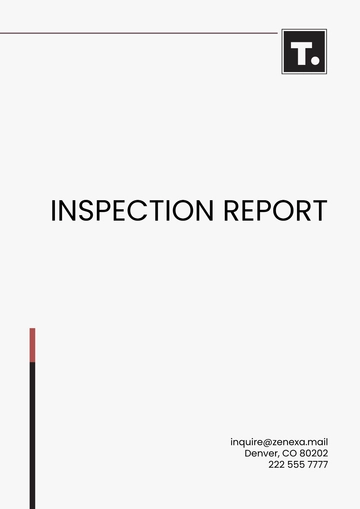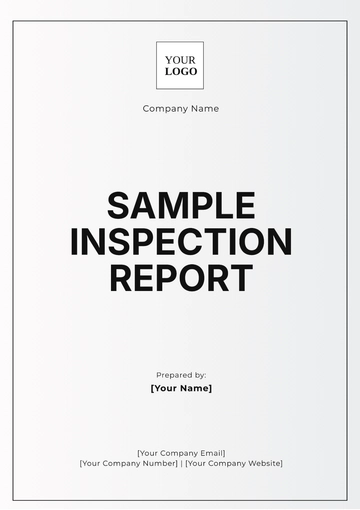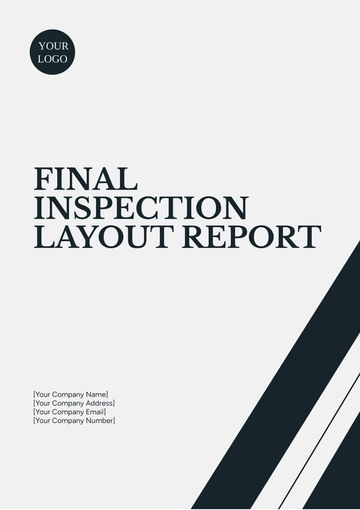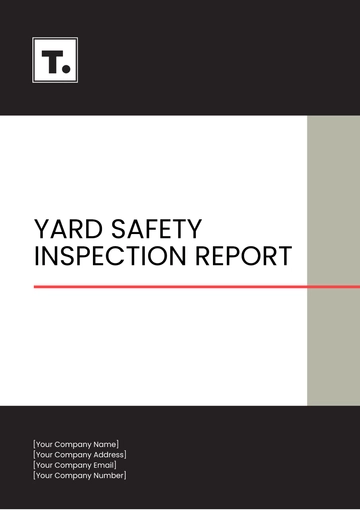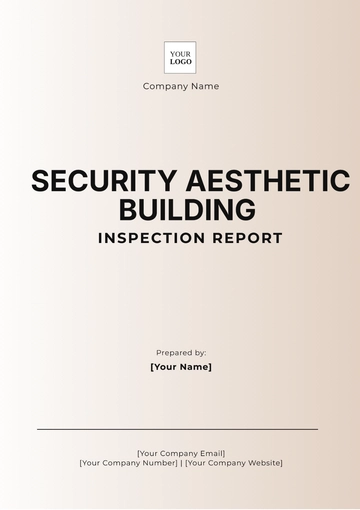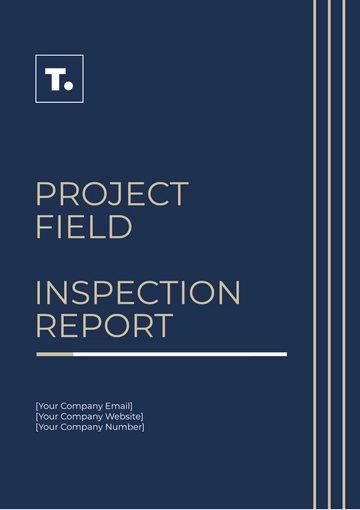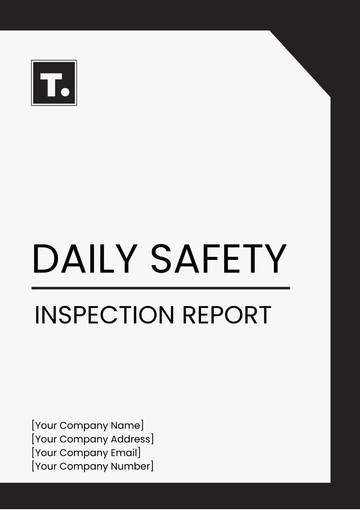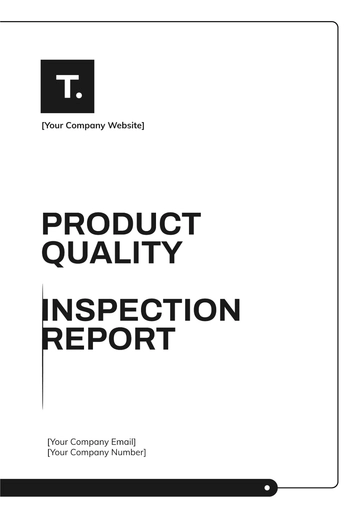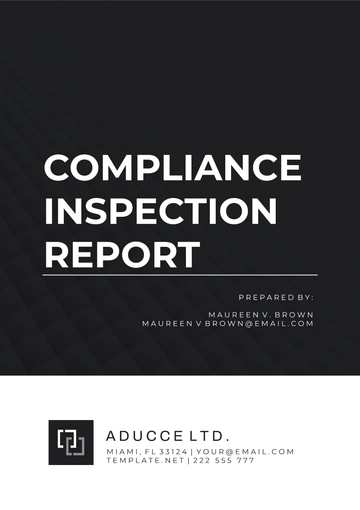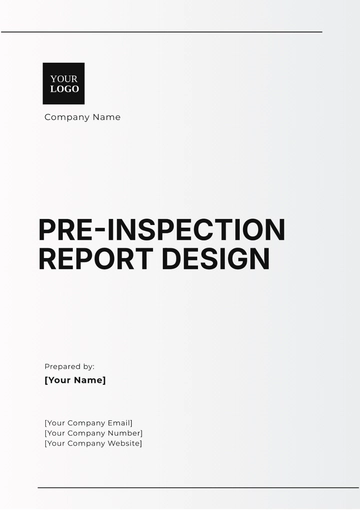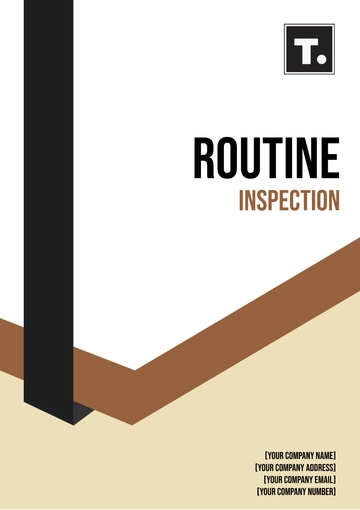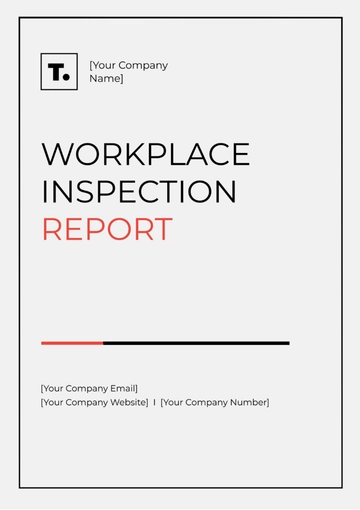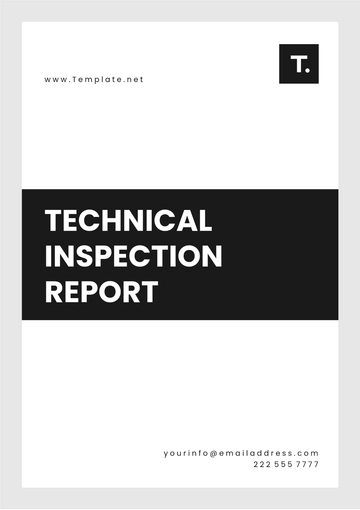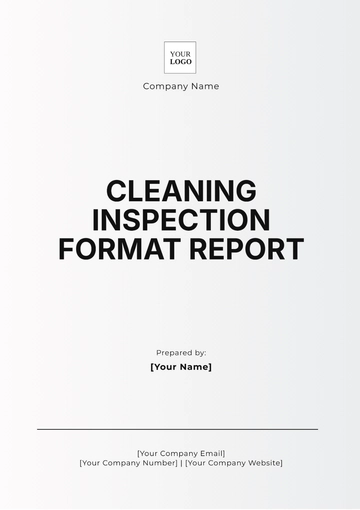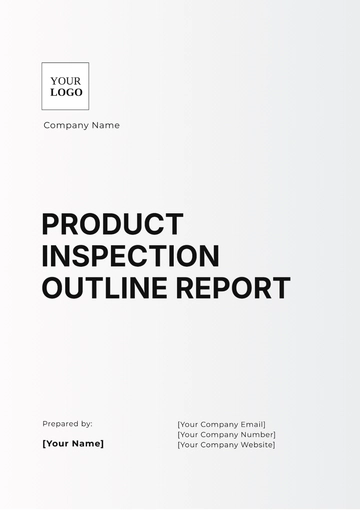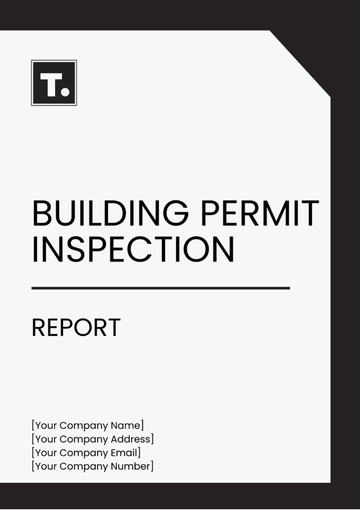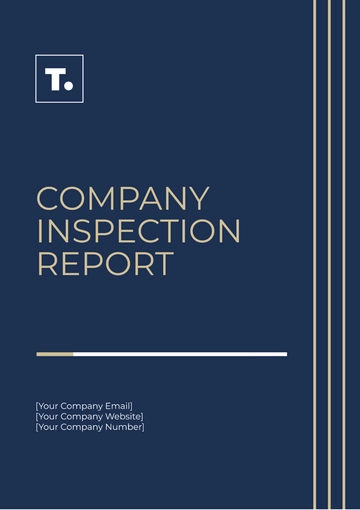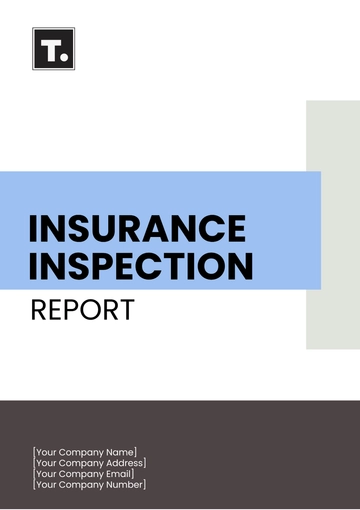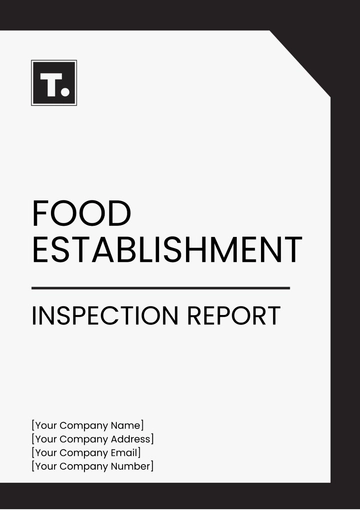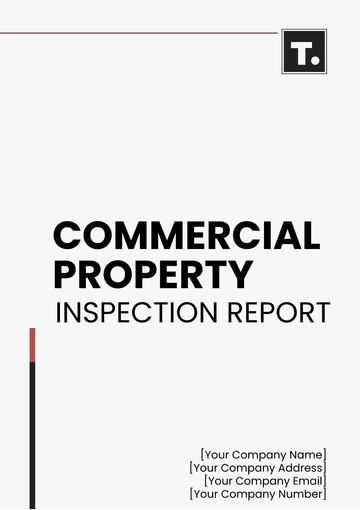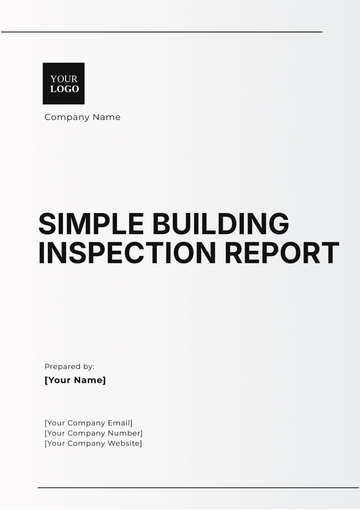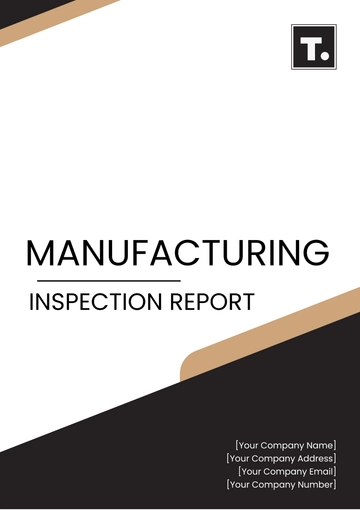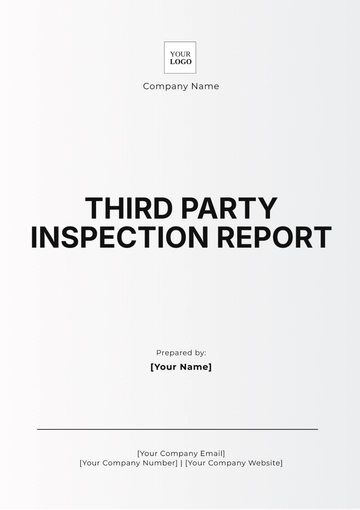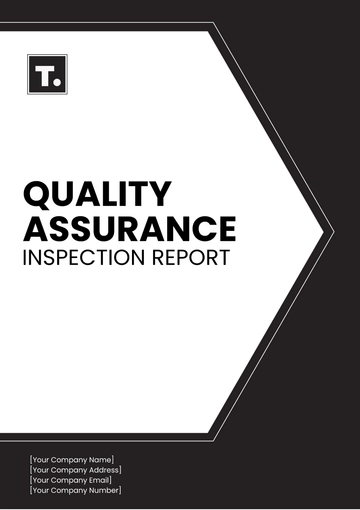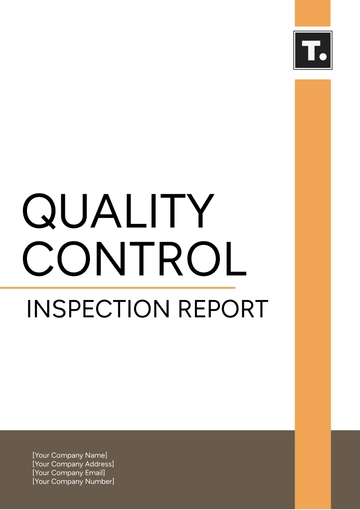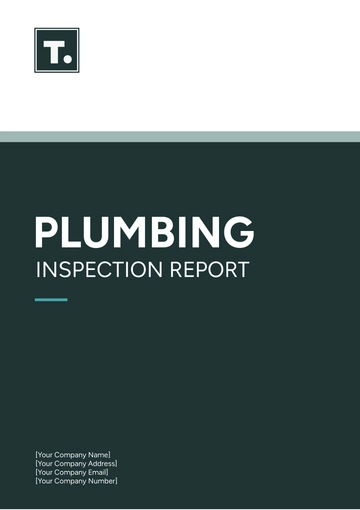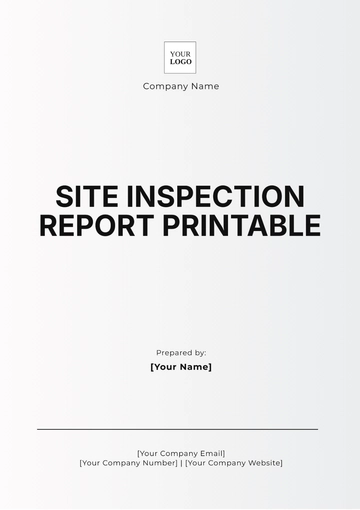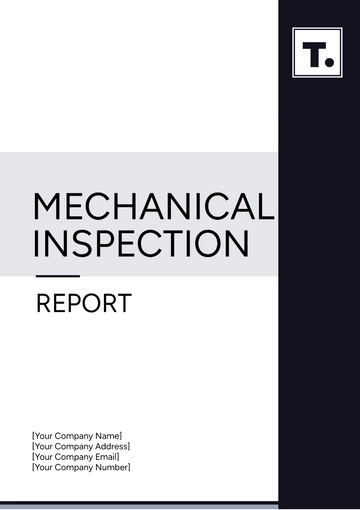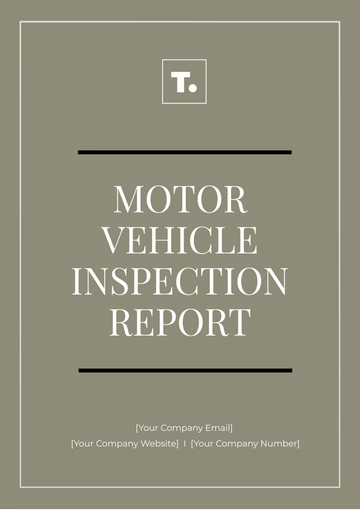Free Pest Control Service Inspection Report
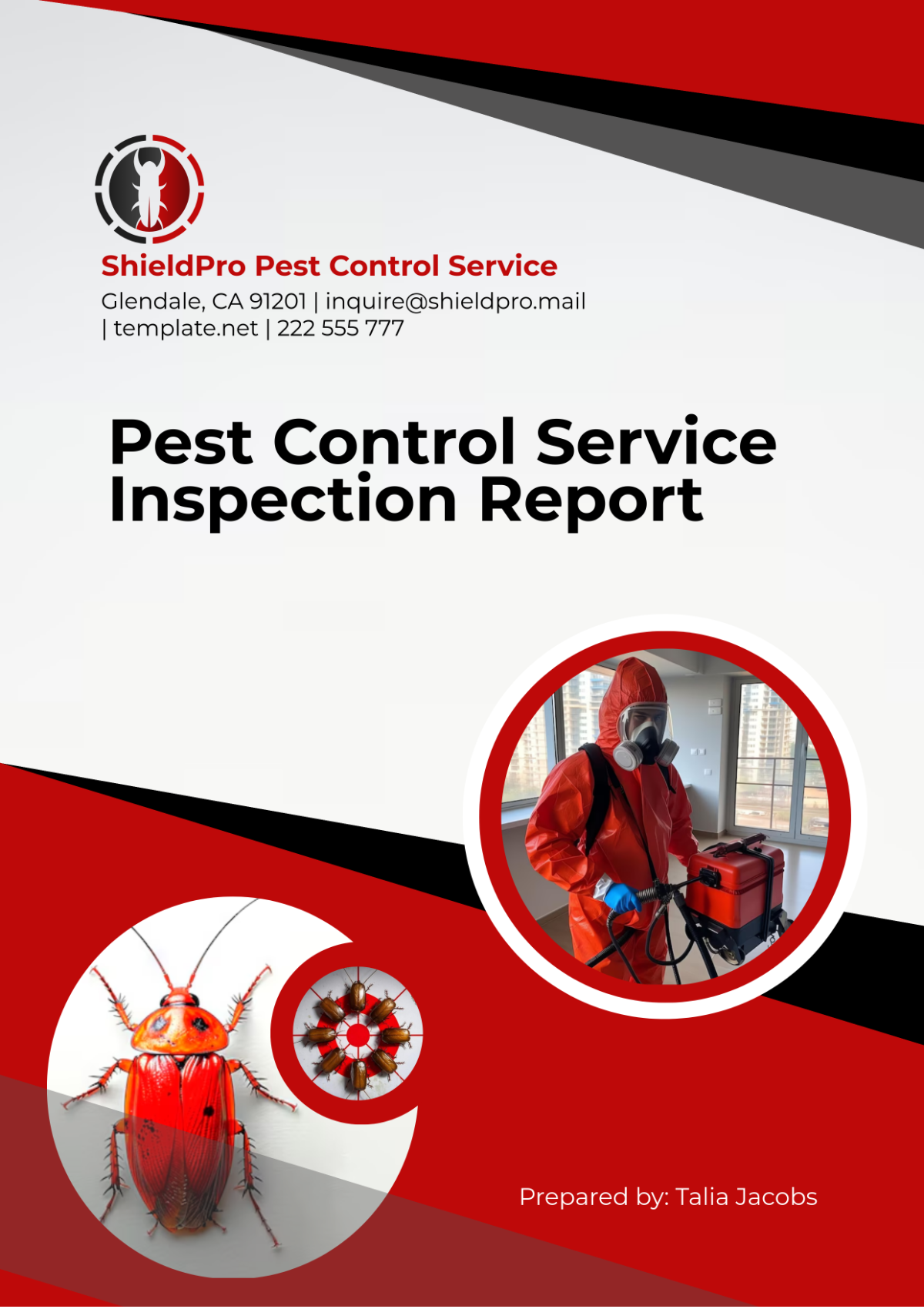
[Your Company Name]
Date: [Date]
Location: [Your Company Address]
Inspector: [Your Name]
Report Number: [Report Number]
1. Introduction
Pest infestations are not only a nuisance but can also lead to significant health risks and property damage. This Pest Control Service Inspection Report provides a detailed overview of the pest control measures employed at the inspected location, the findings of the inspection, and recommendations for ongoing pest management. The report serves to document the status of pest control at the site and is essential for both preventative and reactive strategies.
This report follows the inspection conducted on [Date], using the latest technology and methodologies available as of the year 2050. Our inspectors have been trained in the latest pest management strategies and have a comprehensive understanding of the potential hazards posed by various pests. All findings are based on visual inspection, trapping data, and customer feedback where applicable.
The importance of pest control cannot be overstated. Pests can carry diseases that pose serious health risks, damage property, and contaminate food supplies. This report aims to provide actionable insights to mitigate any current issues and prevent future infestations.
2. Objective
The primary objectives of this inspection are:
To assess the current level of pest activity.
To identify potential pest entry points and conducive conditions for infestations.
To evaluate the effectiveness of existing pest control measures.
To provide recommendations for improved pest management practices.
By fulfilling these objectives, we hope to provide a comprehensive overview that helps the client understand their current pest situation and the necessary steps required for effective pest management. Each objective will be elaborated upon in the subsequent sections of this report.
3. Scope of Inspection
The inspection covers the following areas:
Interior Areas: All rooms, including kitchens, bathrooms, storage areas, and other living spaces.
Exterior Areas: The perimeter of the building, including foundations, landscaping, and outbuildings.
Common Areas: Any shared spaces, if applicable, such as hallways, lobbies, and parking lots.
Each of these areas will be inspected thoroughly to gather data on pest activity and any conditions that might foster pest infestations. Special attention will be paid to areas that are commonly overlooked, as these can often harbor hidden pest populations.
4. Inspection Methodology
The inspection was conducted using the following methodology:
Visual Inspection: A thorough examination of all accessible areas for signs of pest activity, damage, and conducive conditions. This includes checking for droppings, nests, and other signs of infestations.
Monitoring Devices: Utilization of traps and monitoring devices to assess pest populations. These devices are strategically placed based on known pest behavior and patterns.
Customer Interviews: Gathering information from occupants regarding observed pest activity and previous pest management efforts. This qualitative data is crucial for understanding the history of pest issues in the area.
Photographic Documentation: Taking photographs of key areas and findings to support the report. Visual evidence can be very helpful in understanding the extent of any infestations.
This combination of methods allows for a comprehensive understanding of the pest situation at the property and aids in formulating effective management strategies.
5. Findings
5.1 Interior Inspection
5.1.1 General Condition
The overall cleanliness of the interior areas was satisfactory, with most areas well maintained. However, minor clutter was observed in [insert specific rooms], which may provide hiding places for pests. Keeping spaces clear and organized can significantly reduce the risk of pest infestations.
It was noted that food items were not adequately sealed in several areas, particularly in the kitchen. For instance, several boxes of cereal and snacks were left open, providing easy access to pests.
5.1.2 Pest Activity
Rodents: Signs of rodent droppings were noted in the kitchen and pantry areas, particularly near food storage. The presence of chew marks on boxes indicates an active infestation. There were approximately [25] droppings found, with a concentration near the pantry shelves.
Insects: Evidence of ants was observed in the living room and bathroom. Small trails were seen leading to food sources. The ant trails were particularly prominent near the trash can and food prep areas, which could indicate a larger nest nearby. Additionally, a few cockroaches were sighted in the basement, particularly near plumbing. The inspector noted a specific area behind the washing machine that appeared to be a potential breeding ground for these pests.
5.2 Exterior Inspection
5.2.1 General Condition
The exterior was generally well-maintained, but several issues were noted that could lead to pest entry. Cracks in the foundation were noted, particularly on the north side of the building, which could serve as entry points for rodents.
Landscaping: Dense shrubbery against the building may provide harborage for pests. We recommend trimming back any plants that touch the building to reduce this risk.
Debris: Accumulation of leaves and debris was found near the foundation, which could attract pests. An estimated [50] pounds of debris was removed during the inspection, and it is recommended to establish a regular cleaning schedule.
5.2.2 Pest Activity
Rodents: Entry points were identified at the base of the foundation and around utility lines. Burrows were found near the garden area, indicating nearby nesting sites. The inspector noted approximately [3] burrow openings around the property perimeter.
Insects: Evidence of termites was noted on the exterior wooden structures, with mud tubes visible on the foundation. The mud tubes were approximately [0.5] inches wide, indicating active termite activity. Carpenter ants were also observed near the eaves, indicating potential wood damage. A nearby tree was also noted as a potential point of access for these ants.
5.3 Common Areas Inspection
5.3.1 General Condition
The common areas were found to be clean and well-maintained. However, potential pest attractants were noted, such as leftover food in garbage bins. It is essential to ensure that all waste is disposed of properly to avoid attracting pests.
Storage Areas: Several storage areas were cluttered with unused items, which could provide shelter for pests. It is advisable to regularly clean and organize these spaces to deter infestations.
5.3.2 Pest Activity
No active infestations were observed in the common areas. However, preventative measures should be reinforced, especially regarding waste management. Regular inspections of these areas are recommended to monitor for any changes in pest activity.
6. Pest Activity Chart
The following chart summarizes the observed pest activity during the inspection:
Pest Type | Interior Findings | Exterior Findings | Action Required |
|---|---|---|---|
Rodents | Active droppings | Entry points found | Immediate baiting and exclusion |
Ants | Trails observed | None observed | Bait placement in affected areas |
Cockroaches | Few sightings | None observed | Thorough cleaning and baiting |
Termites | None observed | Mud tubes found | Treatment by a licensed professional |
Carpenter Ants | None observed | Nesting near eaves | Treatment and monitoring |
7. Recommendations
7.1 Immediate Actions
Rodent Control: Implement a baiting program at identified entry points and set traps within the interior areas, particularly in the kitchen and pantry. All food should be securely stored in sealed containers to minimize food sources for rodents. It is essential to monitor traps regularly and replace bait as needed to maintain effectiveness.
Ant Control: Place bait stations in the affected areas to eliminate trails and nests. Continuous monitoring for re-infestation should be conducted, particularly in areas where trails were observed. Inspecting and treating the perimeter of the property may also be beneficial to deter foraging ants.
Cockroach Management: Conduct a deep cleaning of the affected areas, particularly in the kitchen. Deploy cockroach baits and traps to monitor activity levels. It may also be necessary to inspect plumbing and drainage systems for potential access points for cockroaches.
7.2 Preventative Measures
Exclusion: Seal gaps around utility lines and repair any holes or cracks in the foundation. Install door sweeps and screens on windows to reduce entry points. Preventative maintenance is critical in reducing potential pest access.
Landscaping Management: Trim back shrubs and plants that touch the building. Ensure there is a clearance of at least [12] inches from the foundation. Maintaining a barrier of gravel or mulch around the foundation can also help deter pests.
Debris Removal: Regularly remove leaves, debris, and other organic materials from the foundation perimeter to discourage pest activity. Establishing a routine schedule for outdoor cleaning can significantly reduce the likelihood of pest infestations.
7.3 Long-Term Strategies
Regular Inspections: Schedule quarterly inspections to monitor pest activity and the effectiveness of the implemented strategies. These inspections will help in identifying any new pest threats before they become significant issues.
Education and Awareness: Provide training sessions for occupants on pest identification and prevention techniques. Inform them about the importance of reporting sightings immediately, as early detection is crucial in managing pest populations.
Integrated Pest Management (IPM): Employ an IPM approach that combines various management strategies for a sustainable pest control solution. This includes habitat modification, biological control, and chemical methods only as a last resort. Continuous education on IPM practices for both occupants and maintenance staff can lead to more effective pest management.
8. Conclusion
The inspection conducted by [Your Company Name] has revealed specific areas of concern regarding pest activity and potential entry points within the property. Immediate action is required to address the rodent and ant populations, along with proactive measures to prevent future infestations. By implementing the recommended actions and maintaining a vigilant approach to pest management, the property can be safeguarded against pests.
Continuous monitoring, regular inspections, and education of occupants will form the foundation of an effective pest control program. We appreciate the opportunity to conduct this inspection and look forward to assisting you in maintaining a pest-free environment.
9. Appendix
9.1 Data Summary
Total Rodent Droppings Found: [25]
Number of Active Entry Points Identified: [3]
Total Ant Trails Observed: [5]
Number of Active Cockroaches Sighted: [2]
Total Mud Tubes Noted for Termites: [4]
9.2 Cost Estimates for Recommended Services
Service Description | Estimated Cost |
|---|---|
Rodent Baiting Program | [$150] |
Ant Bait Placement | [$75] |
Cockroach Treatment | [$100] |
Termite Treatment (if needed) | [$500] |
Quarterly Inspection Fee | [$200] |
This comprehensive inspection report provides a thorough overview of the current pest control status at the inspected property. By following the recommendations outlined, the client can significantly reduce the risk of pest infestations and ensure a safer environment for all occupants.
- 100% Customizable, free editor
- Access 1 Million+ Templates, photo’s & graphics
- Download or share as a template
- Click and replace photos, graphics, text, backgrounds
- Resize, crop, AI write & more
- Access advanced editor
Document inspections effectively with the Pest Control Service Inspection Report Template from Template.net. This editable and customizable report covers areas inspected, pest activity, and recommendations. Use our Ai Editor Tool for detailed, professional inspections.
You may also like
- Sales Report
- Daily Report
- Project Report
- Business Report
- Weekly Report
- Incident Report
- Annual Report
- Report Layout
- Report Design
- Progress Report
- Marketing Report
- Company Report
- Monthly Report
- Audit Report
- Status Report
- School Report
- Reports Hr
- Management Report
- Project Status Report
- Handover Report
- Health And Safety Report
- Restaurant Report
- Construction Report
- Research Report
- Evaluation Report
- Investigation Report
- Employee Report
- Advertising Report
- Weekly Status Report
- Project Management Report
- Finance Report
- Service Report
- Technical Report
- Meeting Report
- Quarterly Report
- Inspection Report
- Medical Report
- Test Report
- Summary Report
- Inventory Report
- Valuation Report
- Operations Report
- Payroll Report
- Training Report
- Job Report
- Case Report
- Performance Report
- Board Report
- Internal Audit Report
- Student Report
- Monthly Management Report
- Small Business Report
- Accident Report
- Call Center Report
- Activity Report
- IT and Software Report
- Internship Report
- Visit Report
- Product Report
- Book Report
- Property Report
- Recruitment Report
- University Report
- Event Report
- SEO Report
- Conference Report
- Narrative Report
- Nursing Home Report
- Preschool Report
- Call Report
- Customer Report
- Employee Incident Report
- Accomplishment Report
- Social Media Report
- Work From Home Report
- Security Report
- Damage Report
- Quality Report
- Internal Report
- Nurse Report
- Real Estate Report
- Hotel Report
- Equipment Report
- Credit Report
- Field Report
- Non Profit Report
- Maintenance Report
- News Report
- Survey Report
- Executive Report
- Law Firm Report
- Advertising Agency Report
- Interior Design Report
- Travel Agency Report
- Stock Report
- Salon Report
- Bug Report
- Workplace Report
- Action Report
- Investor Report
- Cleaning Services Report
- Consulting Report
- Freelancer Report
- Site Visit Report
- Trip Report
- Classroom Observation Report
- Vehicle Report
- Final Report
- Software Report
